NORTH WALES COAST RAILWAY:NOTICE BOARD
Rheilffordd arfordir gogledd Cymru: Hysbysfwrdd
26 July 2021




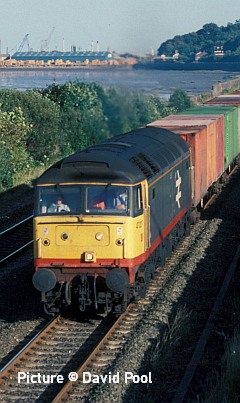
Forthcoming events
(see also our Calendar page for venues)
Note: we have removed all entries relating to meetings as the events are cancelled.
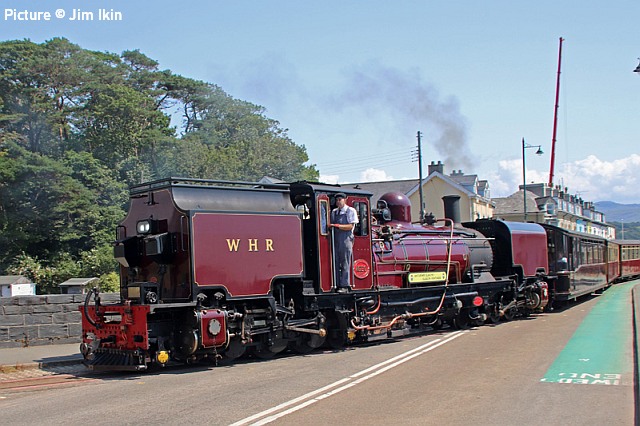
In 29-degree heat, Welsh Highland Railway 130 leaves Porthmadog, 20 July (PIcture by Jim Ikin).
Welsh Mountaineer
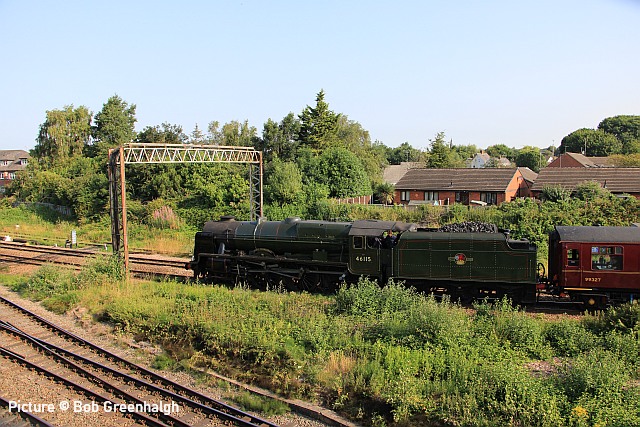
Another steam special on the Coast line, on Tuesday 20 July, was the 'Welsh Mountaineer' from Preston to Blaenau Ffestiniog and back, which in normal times is run at least once per summer by the Railway Touring Company using West Coast Railways equipment. The traction this time was 46115 Scots Guardsman, owned by David Smith who owns West Coast Railways and its depot at Carnforth.
Above, it is seen on the approach to Chester station at Chester East Junction (Bob Greenhalgh). After calling at the station it would see West Junction, North Junction and South Junction, in the course of turning the train so the loco would be tender-first to Llandudno Junction. The climb to Blaenau Ffestiniog is best acheved with the loco facing forward.
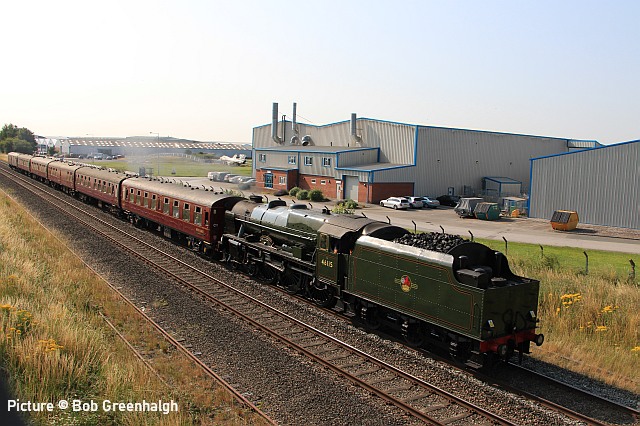
Beeches Farm (Bob Greenhalgh).
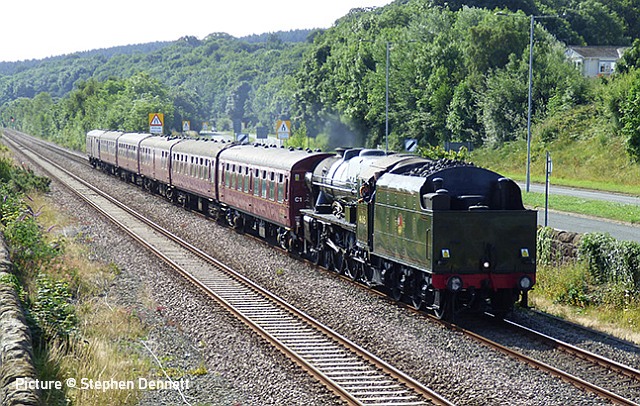
Ffynnongroew (Stephen Dennett).
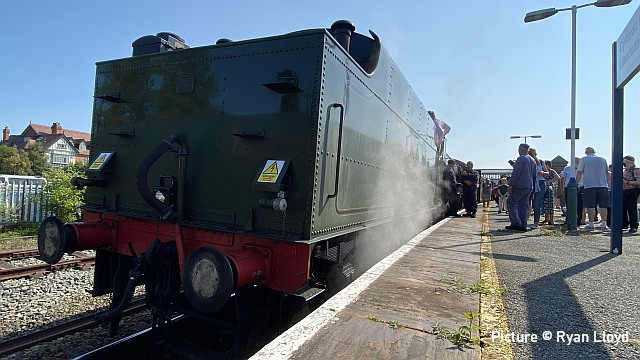
Arrived at Llandudno Junction and 46115 is about to run round to the other end of the train (Ryan Lloyd).
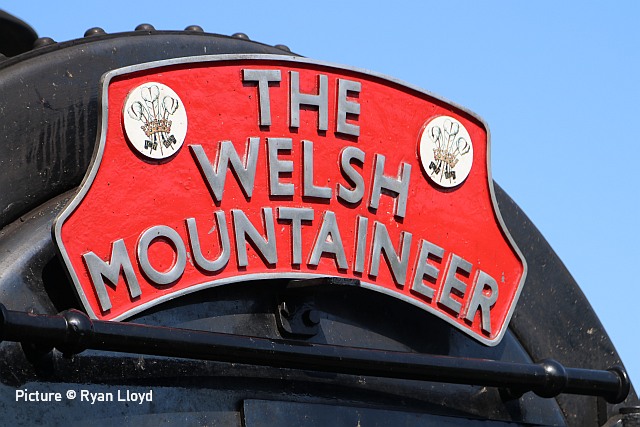
Naplate detail: incuding the Prince of Wales's Feathers - three white ostrich feathers emerging from a gold coronet, with the motton 'Ich Dien' (Ryan Lloyd). This name is not a revival of a historic train name.
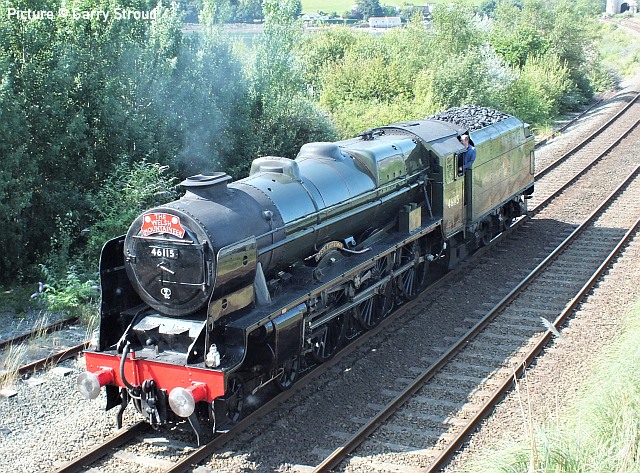
Running round (Garry Stroud) ...
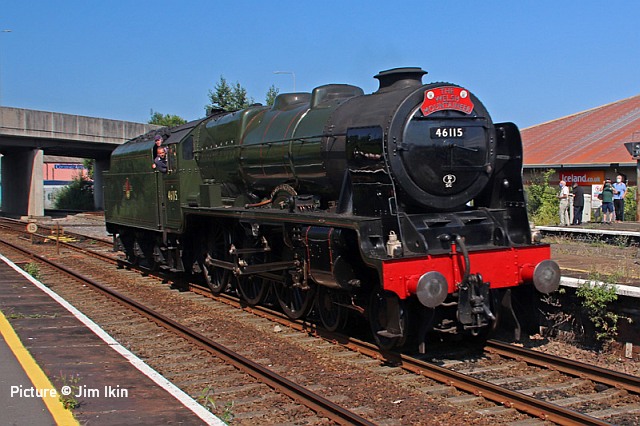
... via Platform 3 (Jim Ikin).
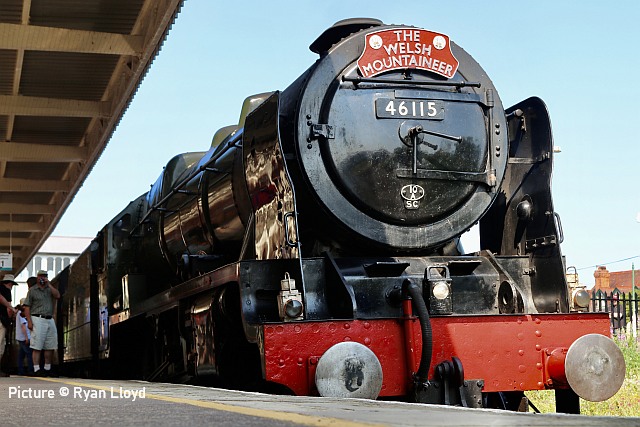
Ready to depart for the Conwy Valley (Ryan Lloyd)
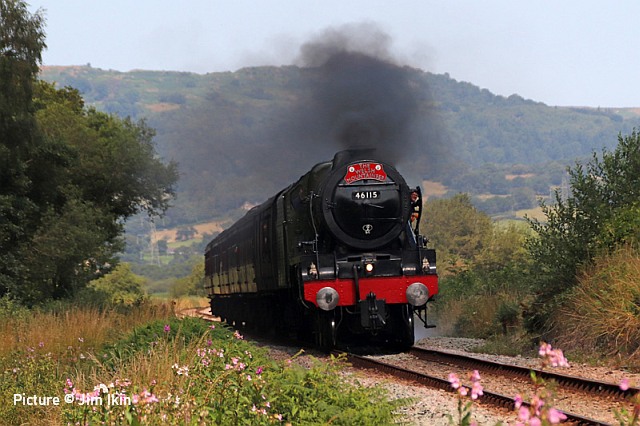
Approaching Dolgarrog (Jim Ikin).
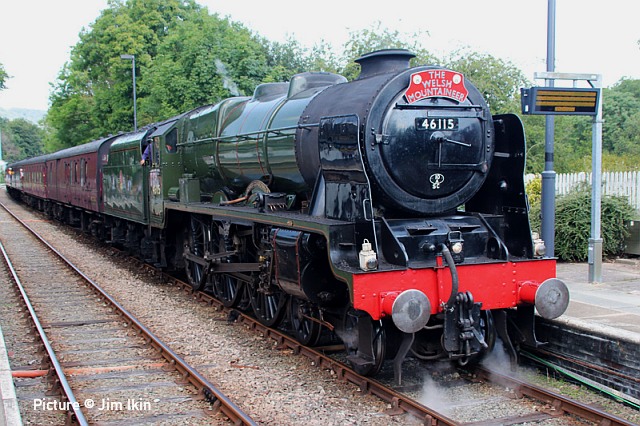
North Llanrwst, where the special passed the Blaenau - Llandudno local (Jim Ikin).
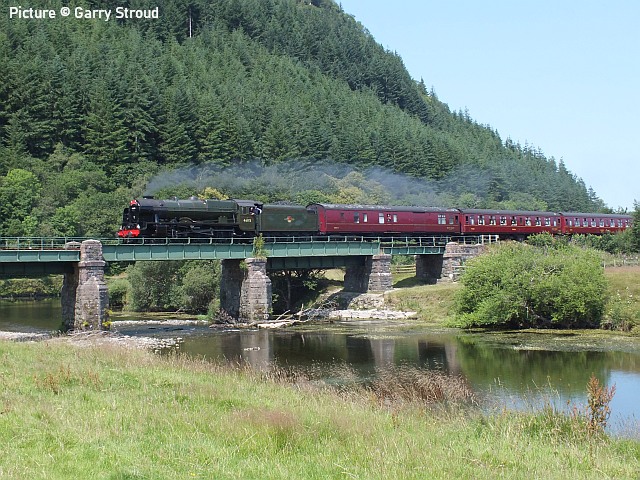
Crossing the Conwy river between Llanrwst and Betws-y-Coed (Garry Stroud).
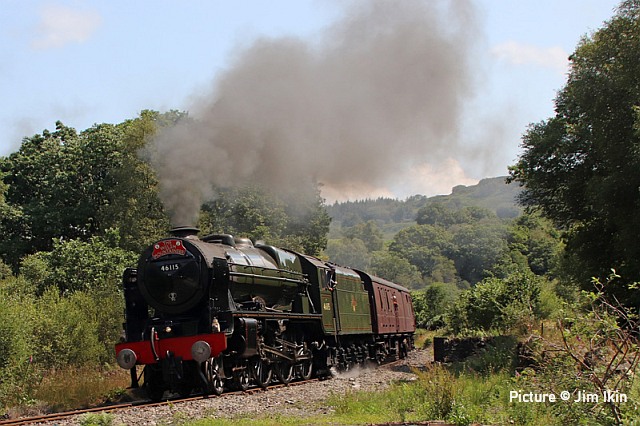
Roman Bridge (Jim Ikin).
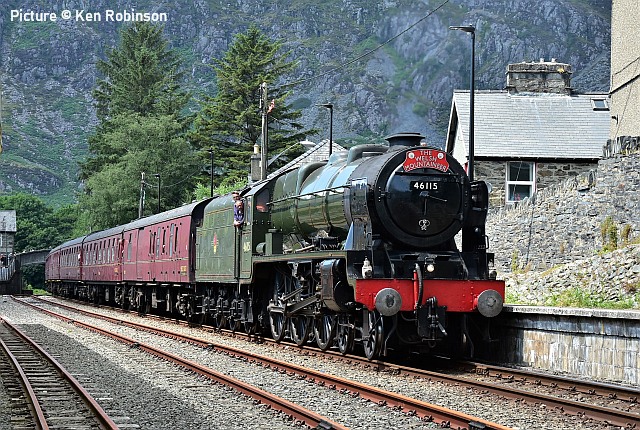
Arrival at Blaenau Ffestiniog (Ken Robinson).
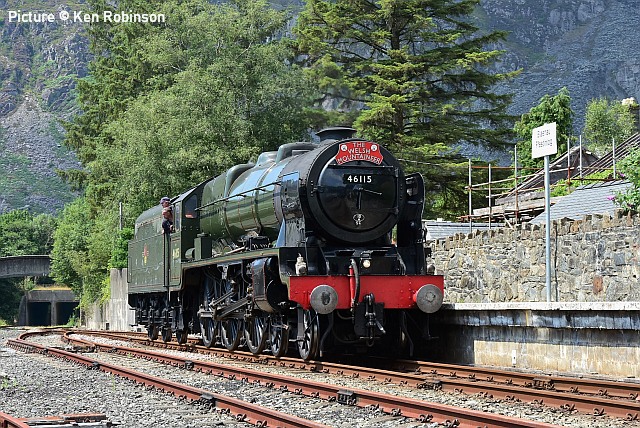
After running round, about to re-attach to the train. It seems that loco crews are chosen for their different heights allowing both to see the line ahead (!)
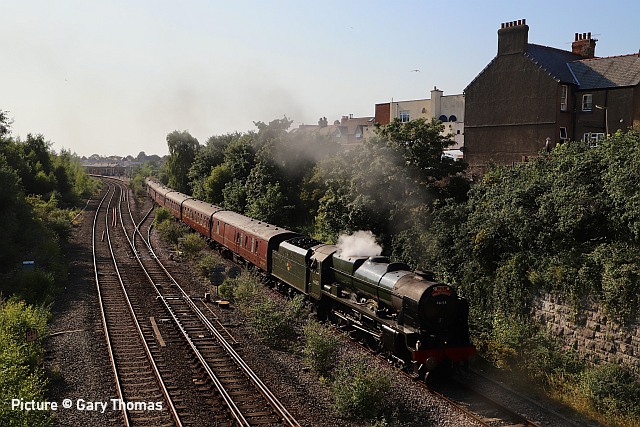
Return train departs Llandudno Junction (Gary Thomas).
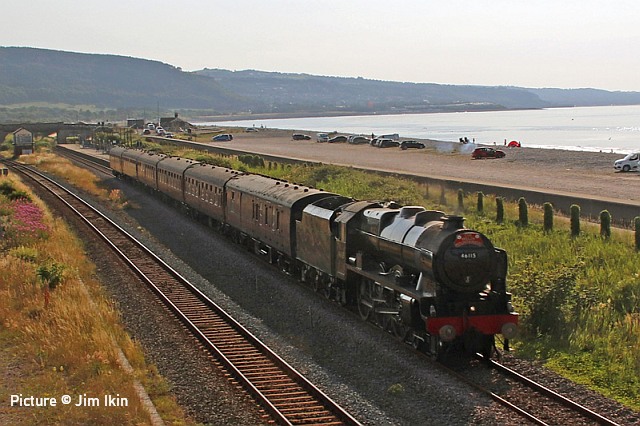
Abergele (Jim Ikin). Built in 1927, the loco was taken out of service by British Railways in 1964, and became one of the leaders of the preservation movement. Unlike many steam locos running today, it was never in a scrapyard.
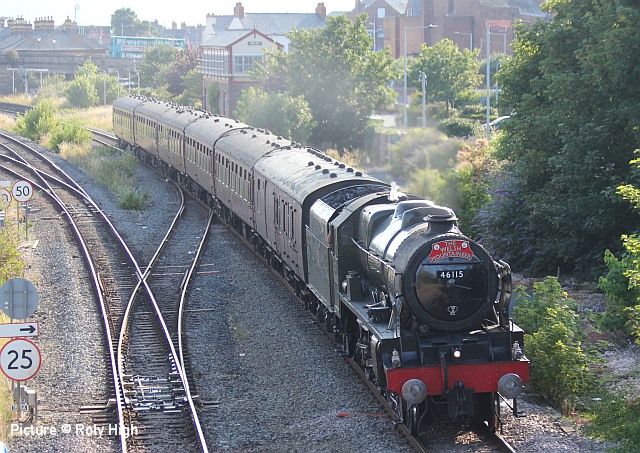
Rhyl (Roly High). This special differs from most in its short length, just five passenger coaches plus a service vehicle. This is the result of experience: in the past, over-ambitious steam specials have been known to fail to master the gradient and curves, especially in the Pont-y-Pant area. As a result, the fares have to be relatively high.
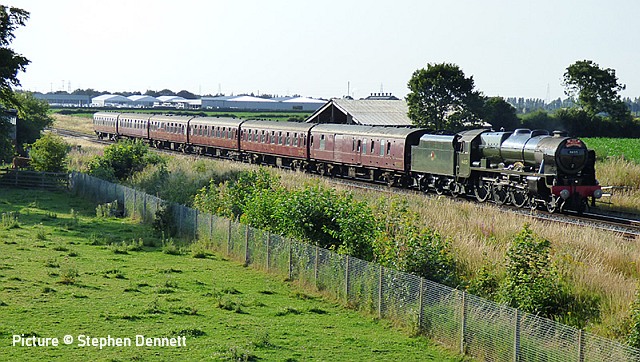
Beeches Farm (Stephen Dennett).
Borderlands line half-hourly service
Transport for Wales have been saying for some time that the 'new' Class 230 trains will be used to double the service frequency on the Wrexham - Bidston service. Their application to Network Rail for track access is now available online, to operate 2 trains per hour with the additional service each hour to have a 'skip-stop calling pattern' which should improve punctuality. The Sunday service would remain hourly.
It's clear that the change will not be 'plain sailing'. Work will be needed at nine level crossings, and there are questions about paths for freight trains, including more planned cement trains to more destinations, and also there are 'concerns that Hanson Cement wish to run more but shorter trains, in order to cope with the climb out of the sidings onto the mainline.'
TfW say that their timetable will be designed to be operated by 150 and 153 units if required, although the acceleration and braking performance is better than the older stock.
'While not a prerequisite for operating a 2tph service (because TfWRL proposes that the service be timed using Class 150 Sectional Running Times, so other trains can be used in the event of unavailability of a Class 230), the purchase represents a significant investment by Welsh Government, and these trains are ideally suited to a route with a lower linespeed and frequent station stops. TfWRL do not propose to deploy, and would have little use for these units, on other routes.'The last statement is rather odd, since when they ordered the trains it was stated that they would also be used on the Conwy Valley line and the Chester - Crewe service.
Class 150 contrasts - pictures by Garry Stroud
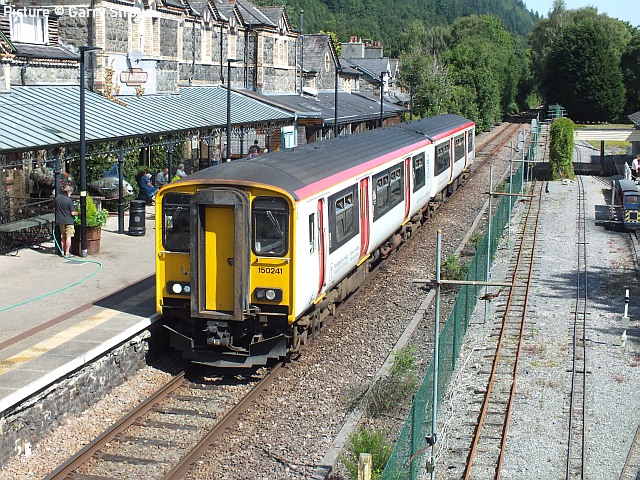
150 241 at Betws Y Coed with the 10:08 Llandudno to Blaenau Ffestiniog service. Monday 19 July 2021.
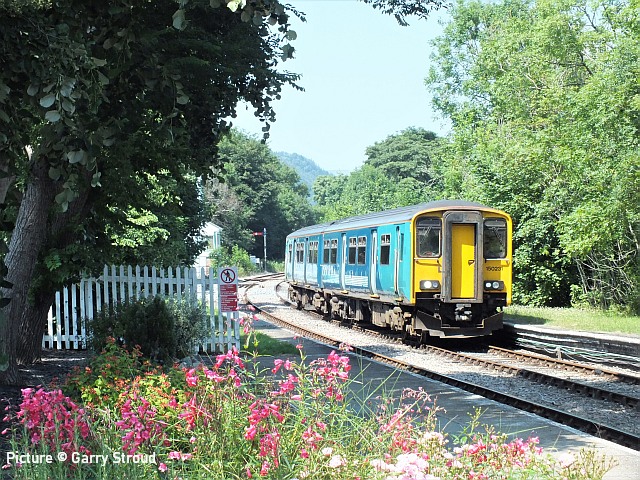
150 231 at Llanrwst with the 13:09 Llandudno to Blaenau service. Tuesday 20 July.
Looking back: Bersham Colliery - by Trefor Thompson
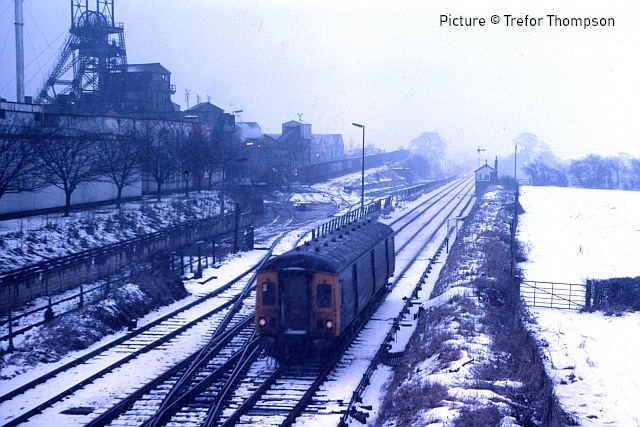
An Up Motor Pacels Van passes Bersham Colliery, 12 February 1979.
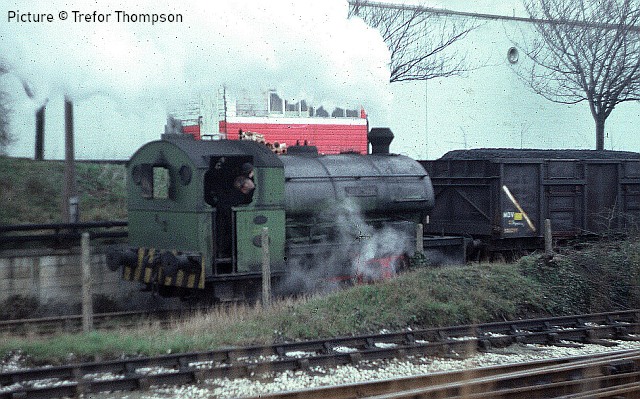
National Coal Board loco Hornet at Bersham Colliery, 3 April 1978.
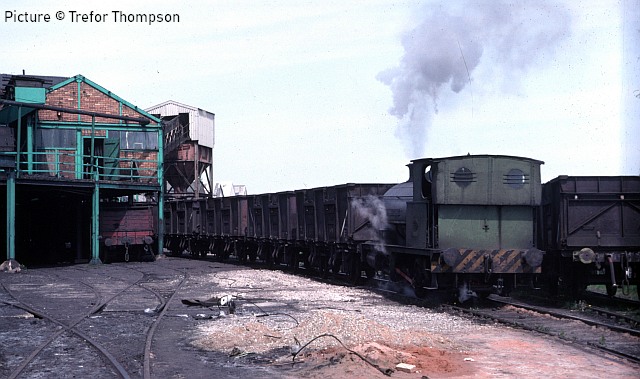
NCB Shakespeare at Bersham Colliery 10 May 1978.
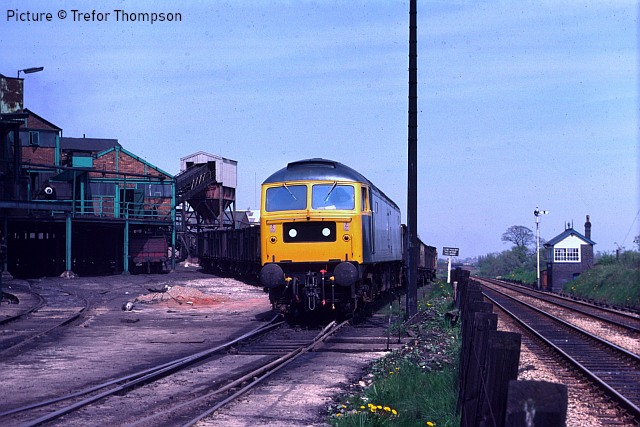
A Class 47 shunting empties into the colliery sidings 10 May 1978.
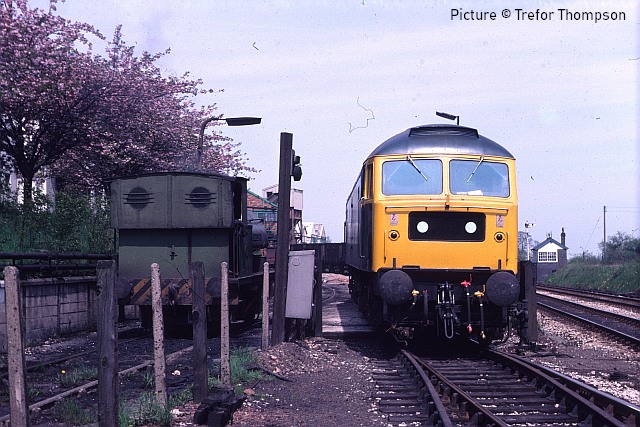
Class 47 and Shakespeare at Bersham colliery 10 May 1978.
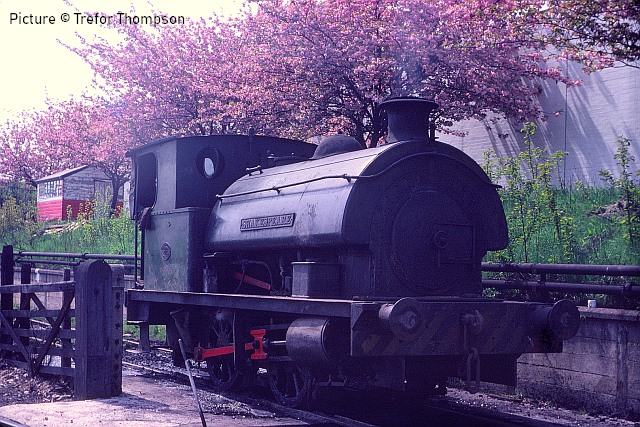
Shakespeare at Bersham Colliery, 10 May 1978.
37 431 - pictures by Graham Breakwell
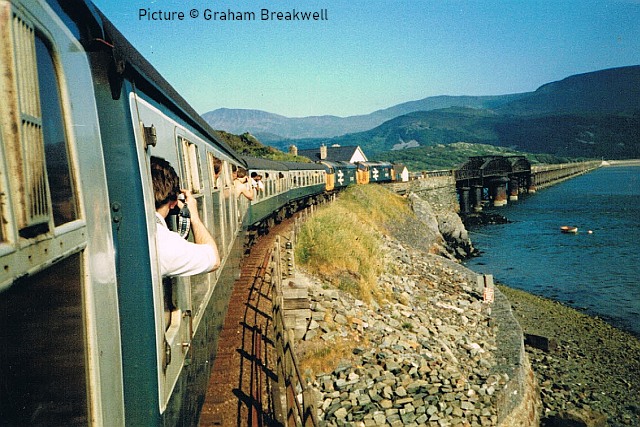
It was nice to see Ken Robinson’s shot of 37 431 in the last issue, taking me back to its large BR logo days, here are two images from that era. Above, 37 431 leading 37 430 onto Barmouth Bridge with the 15:30 Pwllheli to Euston on 6 Seprember 1986. The pair had worked the 11-coach 07:30 ex Euston from Shrewsbury that morning.
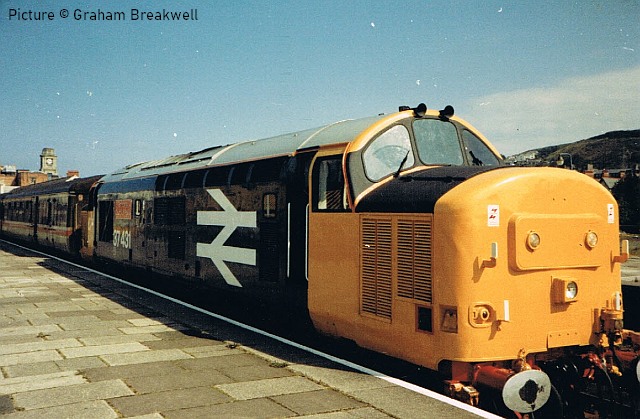
37 431 about to depart from Aberystwyth on 27 September 1986 with the 11:10 to Euston, having worked the Birmingham - Aberystwyth train from Shrewsbury that morning, a train of 10 Regional Railways coaches.
Looking Back: Steam and Diesel 1989-90 - with David Pool
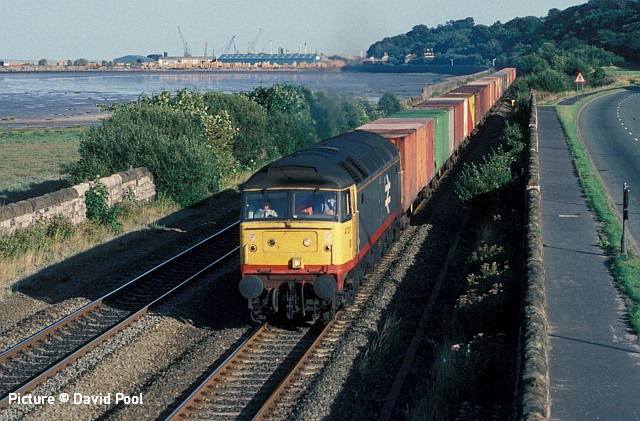
The Freightliner terminal at Holyhead was very busy in the early 1980s, but the trains had become less frequent by 1989. In the early afternoon of 22 August a “red stripe” Railfreight 47 227 was passing Ffynnongroyw, heading towards Holyhead with Mostyn Dock in the background. It possibly originated at Lawley Street, Birmingham.
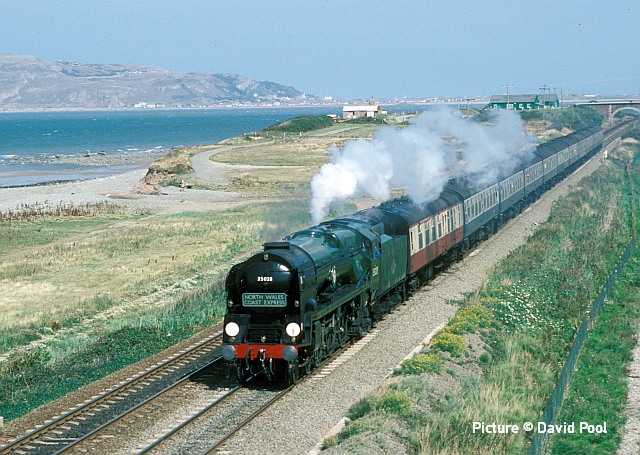
In 1989 there were regular North Wales Coast Expresses, steam hauled between Crewe and Holyhead. 35028 Clan Line was a frequent performer, and on 23 August 1989 is approaching the footbridge at Dwygyfylchi, with the Great Orme in the background.
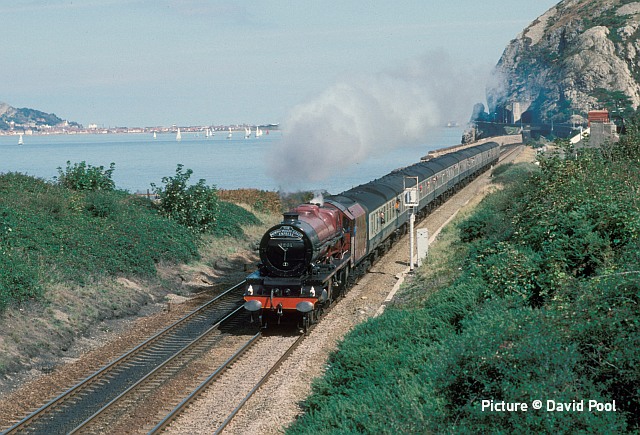
It was the turn of 6201 Princess Elizabeth in the following month. On 3 September the North Wales Coast Express was leaving the tunnel at Penmaenbach. The number of yachts visible suggests there must have been an event at Conwy Marina.
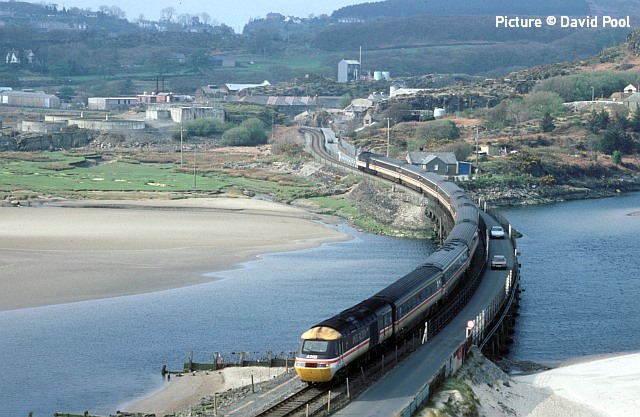
While HSTs were very common on the North Wales Coast, it was rare to see them on the Cambrian lines. Hertfordshire Rail Tours had arranged for “The Cardigan Bay Express” to run between Euston and Pwllheli on 21 April 1990, and it was another of those “not to be missed” occasions. In the morning, I photographed the HST at Barmouth and Dyffryn Ardudwy, but the weather was dull. It brightened up in the afternoon, so I decided that the Briwet Bridge at Llandecwyn would be a suitable location. The power cars were 43 039 and 43 112, and even with the sun “on the wrong side” I was very happy with the resulting shot.
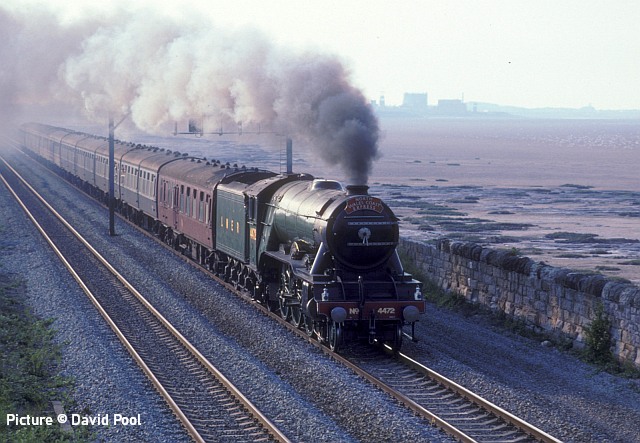
Photographing the returning North Wales Coast Express was a little difficult, with the evening sun giving reflections and deep shadows. The ugly gantry at Ffynnongroyw (now removed) could be partially obscured by smoke, and the buildings at the Point of Air confirm the location. 4472 Flying Scotsman was the locomotive on 18 July 1990, running with a single tender and in the more familiar 1920s condition carried in the early years of preservation. I have mixed feelings about this, since the rolling stock available today is more appropriate for Flying Scotsman in the rebuilt BR condition it now carries.
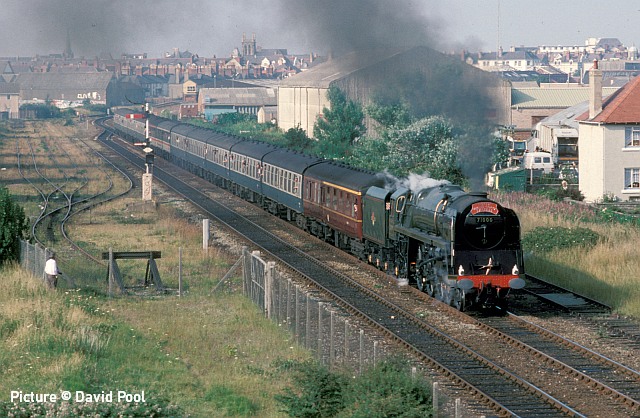
On 24 July 1990 the track layout at Llandudno permitted the North Wales Coast Express from Holyhead to be dragged back from Llandudno Junction by a diesel. The steam locomotive on this day was 71000 Duke of Gloucester, and the passengers are appreciating the performance leaving Llandudno with what seems to be a twelve-coach train.
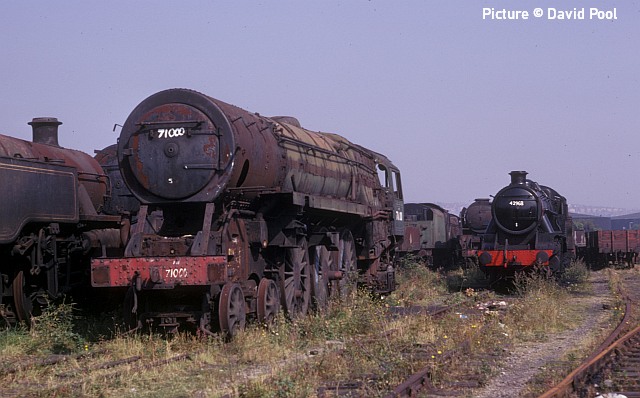
Eighteen years earlier I had photographed the remains of 71000 at Barry on 23 September 1972 – no chimney, tender, cylinders or motion. The subsequent rebuilding rectified design problems and construction errors which had resulted in poor steaming characteristics, and the new 71000 has gained a reputation as one of the most powerful locomotives in preservation.
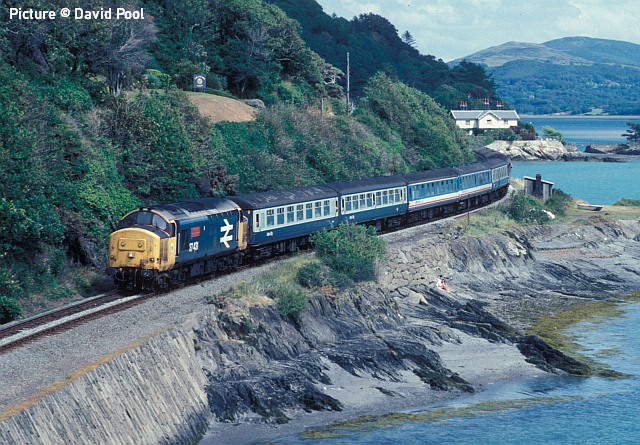
The railway alongside the Dovey Estuary must surely be one of the most scenic in the British Isles. One of the best viewpoints for a photograph was at Penhelig, but it later suffered from vandalism of the shrubs and plants, attributed to some thoughtless photographers who tarnished the reputation of railway enthusiasts. The 09:03 Euston to Pwllheli train on 28 July 1990 was headed by 37 431 Sir Powys/County of Powys. Unfortunately this locomotive has not been a survivor, being scrapped in the year 2000.
From Dave Sallery's archive
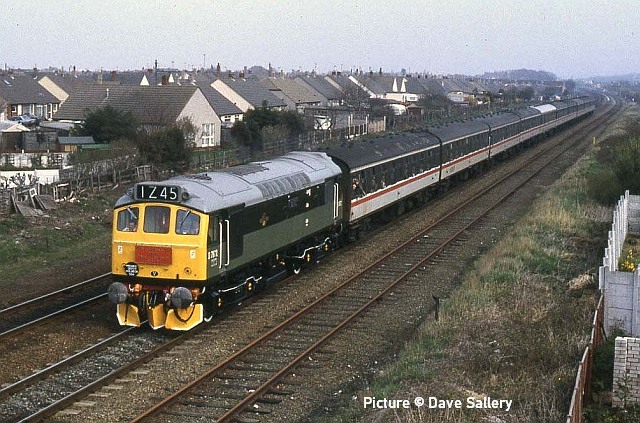
D7672 Tamworth Castle working the 'Rat Requiem' railtour, approaching Rhyl on 30 March 1991. This was the final run of a 25 on BR: see the Six Bells Junction site for details.
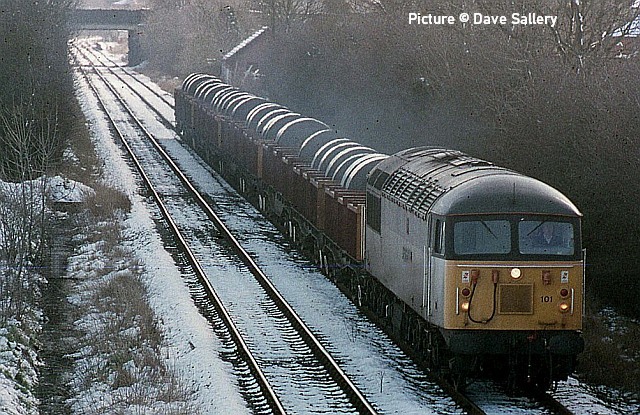
56 101 Mutual Improvement passing Hope on a Margam - Dee Marsh train, 3 March 1995. 56101 is now earning it's keep with 'Floyd' in Hungary.
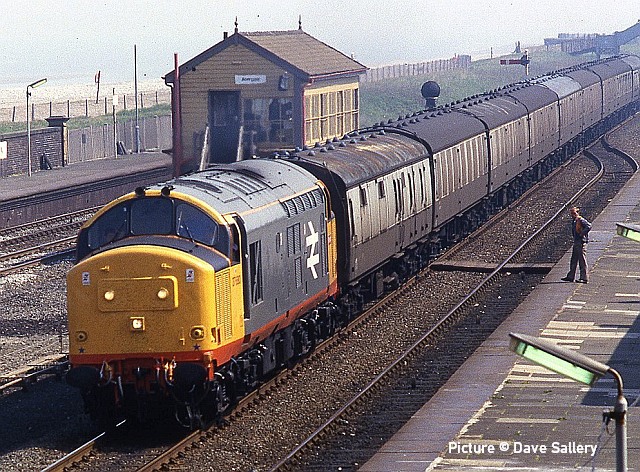
37 680 on test through Abergele after refurbishment, 8 May 1987.
[The BR 1960s black-and-white style seen on the signalbox is, with a slightly different typeface, to again be the standard for station signs under the new Great British Railways admisitration. Nationalised 'Northern Trains' have already begun converting their signs.]
Gerisim revisited - by 'Skimpler'
Readers might recall my piece (23 February) about Gerisim Llanfairfechan's former "west end" until the re-building of the A55. I still haven't many more details of the former quarry sidings except that I think quarrying ended on the west side of the hill before World War 2.
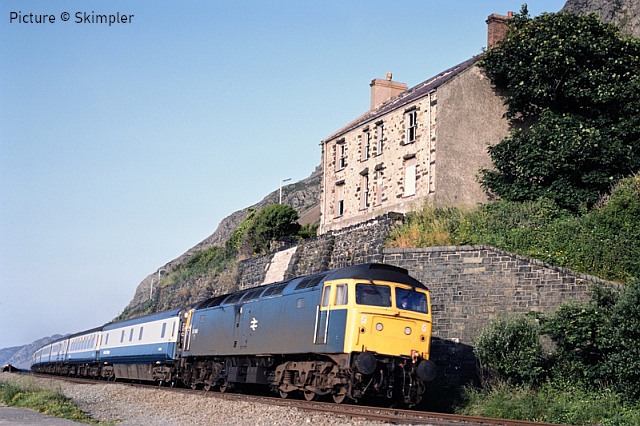
My first picture shows on 47 485 on a Sunday evening Euston to Holyhead which has the sleeping car at the head end. The sleeping car was conveyed empty on the down as there was only sleeper service on the up and on a Sunday, this train was earlier making it easier to capture. Anyway, I digress, the relevance of the shot this time is to point out the wall immediately to the right of the engine and house, note how it is angled away from the track. That is where the line entered the sidings.
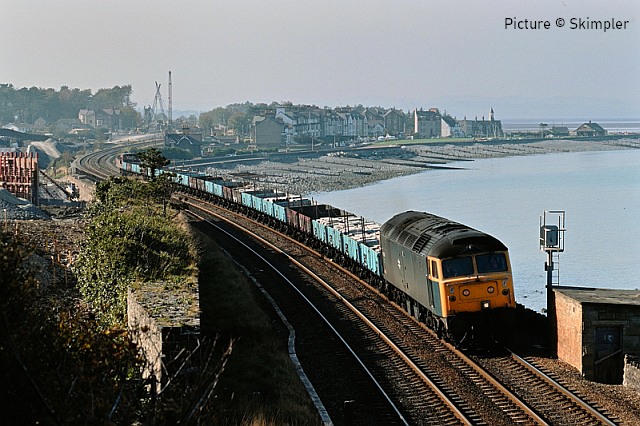
The second shot is taken from the position of the house, after it was demolished. This shows 47 229 with what was at the time, the Chester Signal and Telegraph Department. They had this fleet of wagons, mostly painted blue, I'm not sure if the got around to painting them all before the train was withdrawn. They also had a former LMS brake van, painted blue and named "Bertie" but this train has a BR brake van.
The train was out laying concrete troughing between Aber and Penmaenmawr in preparation for the closure of Aber box. Anyway, it shows to the left foreground, where the sidings exited the main line. The little "island" of high wall probably, not sure, having supported some kind of loader etc from the old days when stuff was loaded or unloaded by gravity instead of mechanical, diesel burning, grab. How quaint. On the right is Penmaenmawr up distant signal.
What I have only found out recently, from a local, well known chap, name of Watson-Jones of Penmaenmawr, is that the building next to the signal housed the ground frame for working the points. At this time, re-construction of the A55 is well under way and now, 33 years later, they are about to have a second go at this bit.
Llangollen news
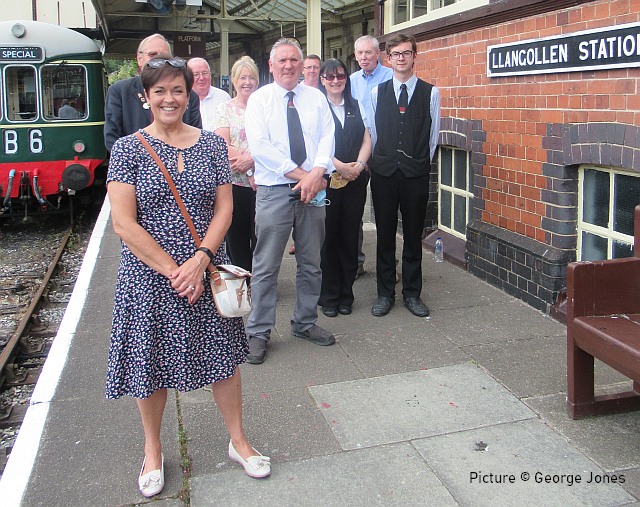
The Deputy Minister for Arts and Sport, Dawn Bowden MS, visited Llangollen station on Tuesday 20 July. Her visit came following the announcement that Llangollen Railway Trust had been awarded a grant of £143,290 from the Wales Cultural Recovery Fund Phase 2. The grant aid enables the LRT to have confidence in the ability to employ staff for certain essential positions which allow the railway to resume operations. Crucially, the award secures the Railway’s immediate future in these uncertain times, certainly into 2022, and beyond if visitor numbers recover and generate revenues to cover the overheads.
She met with members of the LRT Board for a briefing on progress with reopening the line to Carrog and members of the volunteer youth group to learn how they gain skills whilst under taking tasks under supervision.
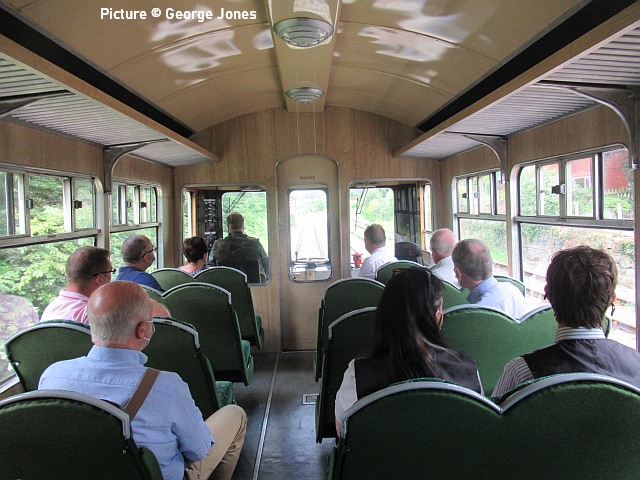
The minister was able to sample a ride in the award-winning class 109 Wickham railcar for the trip down the line to Berwyn. In the course of this journey her seat behind the driver allowed for viewing of the recently re-opened River Dee bridge following installation of new trackwork.
After her return to Llangollen the Minister said, “I was delighted to visit Llangollen Railway today and ride the train to Berwyn. Meeting the Trust board members and younger volunteers was an informative occasion and emphasised how important heritage attractions are for Welsh tourism which the government is keen to support."
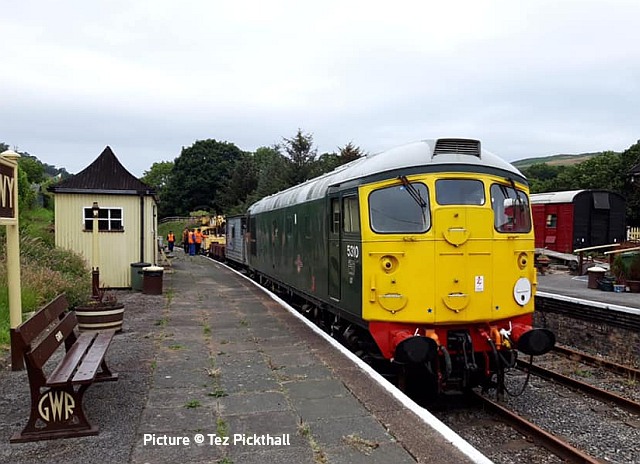
Last week's announcement of trains through to Glyndyfrdwy from 23 July was ambitious and unfortunately not achieved. Instead an engineering train with class 26 D5310 took the 12-ton crane through the tunnel on 24 July to assist with the relaying of the west end points at the station. Inspection and approval of this work and trackside clearance of vegetation west of Berwyn tunnel will delay extension of services until a date, to be announced in August. Diesel railcars run to Berwyn in the meantime. Picture by Tez Pickthall.
North Wales Coast home page | Archive | Previous Notice Board